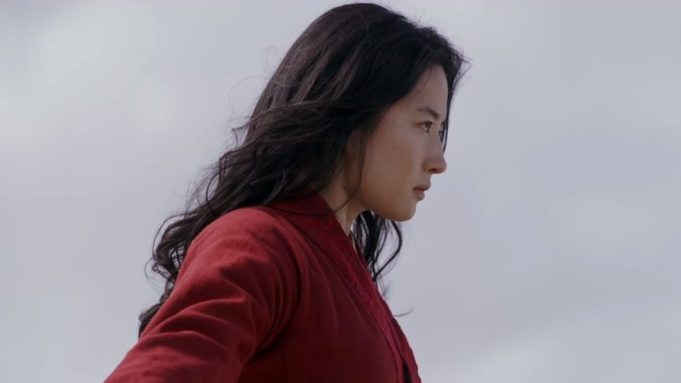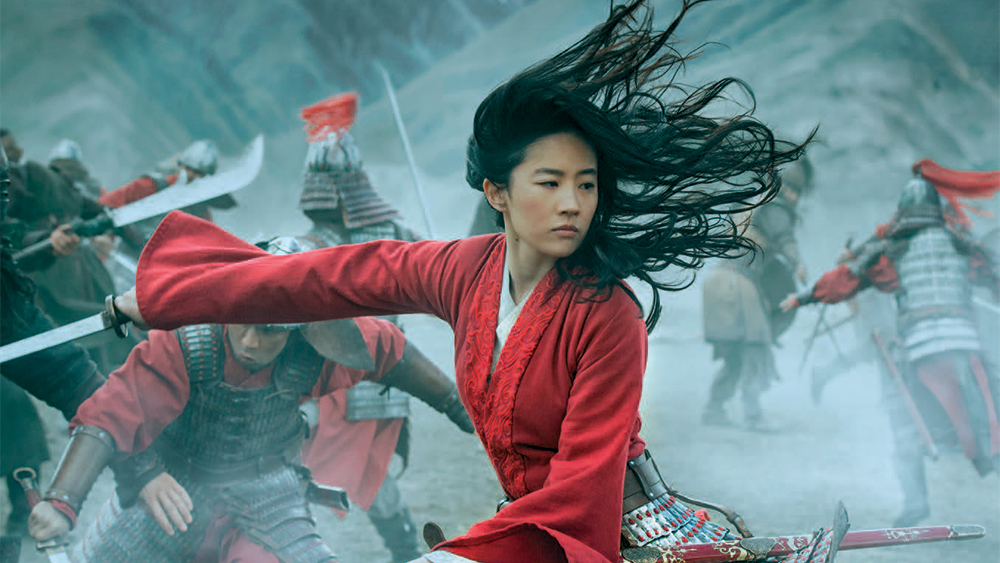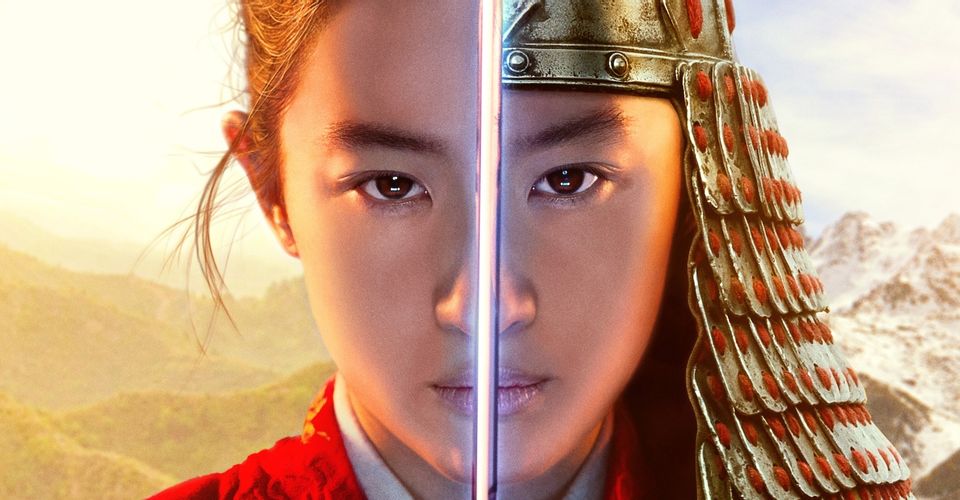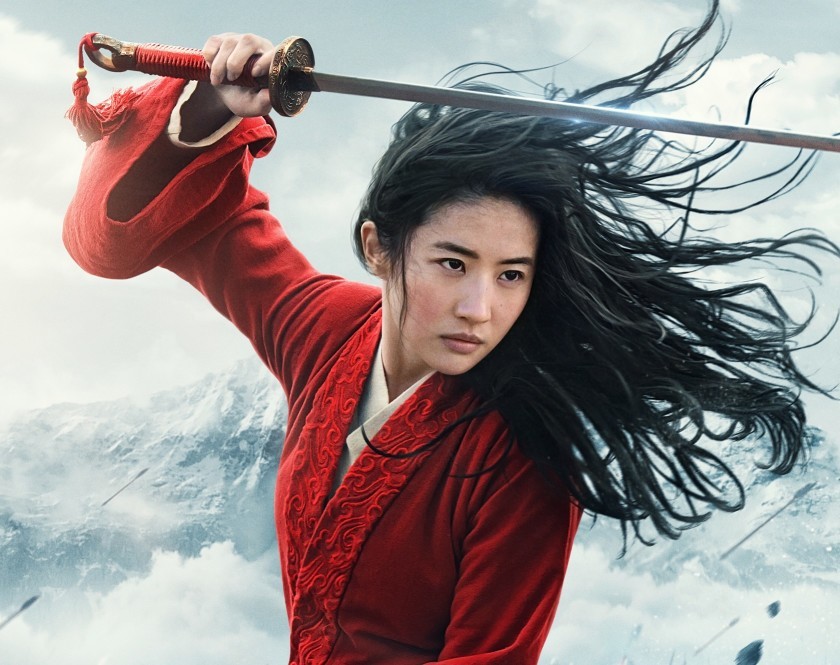The premise of Mulan was ripe to make a bold statement about heroic women and cultural norms. Instead, Disney just made a movie and missed a major opportunity to deliver a powerful heroine. I care deeply about the portrayal of heroic women in fiction and the art of storytelling. And through that lens, Mulan 2020 falls short because the film’s attitude toward heroic women stays clouded.
Mixed Message #1 – Female Individuality is Subordinate
Mulan is the perfect character to teach us about the importance of individual risk and aspirations in relation to culture and social norms. However, in Mulan 2020, the heroine’s journey merely appears to support Mulan’s individual goal. By the end of the film, family approval and cultural duty swallow up Mulan’s individuation. It’s a total clash. Mulan must subordinate herself to the judgment of her family’s patriarch. Her reward? Mulan gets to serve the emperor! Our heroine eventually submits to the very family values and social codes in which she fought against to break free. According to Mulan 2020, female individuation must eventually answer to the cultural powers that do not change their minds in this film about the role of women in society. They simply make an exception for her.

Mixed Message #2 – Female Ability Comes from Magic
In Mulan 2020, feminine excellence is the result of a random surplus of “chi,” which is an inner force. This internal force is apparently wasted on Mulan since women can’t be warriors, and so she must hide her chi and conform to society. Why is this film afraid to show Mulan attaining great ability as a consequence of hard work, discipline, and practice—you know, three dimensions that apply to real life and real women? Why does Mulan 2020 suggest that inner magic is mostly responsible for Mulan’s heroic actions and abilities? When she leaps over armies and gallops through an avalanche, we aren’t seeing the results of her human potential unmasked—no, we’re merely spectating magical abilities. Mulan should show us that women who don’t prefer traditional gender roles can get the job done if given the opportunity. The movie should have demonstrated that there are Mulans all around us—that having a society that allows individuals to choose their path is better than one that has a path imposed upon them.

Mixed Message #3 – Gender Roles Remain
Mulan is a young woman who can save her native culture from an outside threat. However, her society isn’t looking for her and worse, even if they found her and knew of Mulan’s skills—society would still reject her. Here we see a non-western civilization with its own oppressive gender roles. We meet Mulan, who will bring dishonor to her family and abandon domestic duties if she challenges gender roles. The film sets up the problem wonderfully. However, the film doesn’t follow through. In the end, Mulan’s heroic actions do not bring about any long-term change. She earns the begrudging approval of a few key influencers. Mulan herself makes very few comments about her plight and remains rather quiet overall. While the character of Mulan hides from the Chinese Imperial Army, I feel like the script tries to hide her from modern-day Chinese censors.
And finally, in terms of modeling heroic behavior for young girls (and boys), I guess the message is: pray that you have more chi than everyone else. If not, then you’d better be prepared to conform to traditional gender roles. “Knowing your place” remains the source of honor for women by the end of the movie.
Mixed Message #4 – The Reality of Hidden Identity
The film couldn’t pick between serious drama and magical fantasy and so, the matter of hidden identity was mishandled. I mean, what’s it really like? Mulan 2020 is a live-action film about a woman who must hide from her entire culture in order to save it. A disguise that works flawlessly in a cartoon must now be convincing in live-action. Real men in a real male-only army camp surround her. The film should have aimed higher in exploring the difficulties of a woman passing as a man. In truth, Mulan looked like a woman in disguise through most of the film. In one scene, she merely wanders off to secretly bath at night. But “real” army camps have pitched guard posts, vigilant patrols, and strict time-tables to catch deserters or spies. Soldiers would question a warrior that routinely skips bathing. If you’re going to do live-action, you must solve for these realities, which could have intensified all the tension and touched on real-world issues—instead, the live-action works against the film.

Mixed Message #5 – No Fun
In the end, Mulan 2020 just isn’t very fun. Was this supposed to be a fun film for kids? Who was the target audience? The somber overtones of duty and honor hung like a cloud over the movie. And the removal of beloved characters, like Mushu, left the film feeling vacant and without any heart. Instead, the film replaced Mushu with a symbolic phoenix (not a character) that has no speaking lines. All the charm and splash of the animated Mulan is completely missing in this film. It’s just too serious.
Mulan 2020 had a beautiful opportunity to make a bold statement about a heroine who forced society to confront its limited view of women in general and gender roles in particular. The timing for such a film was perfect. The audience was ready. The filmmakers, surprisingly, were not.
Douglas A. Burton is an award-winning historical fiction author who cares deeply about popular depictions of heroic men and women. His ongoing work on heroic women in fiction centers on the mythology and recurrent themes of heroine-centric stories. He believes that the heroine’s labyrinth model is a serious alternative to the male-oriented hero’s journey. For more, visit douglasaburton.com.
